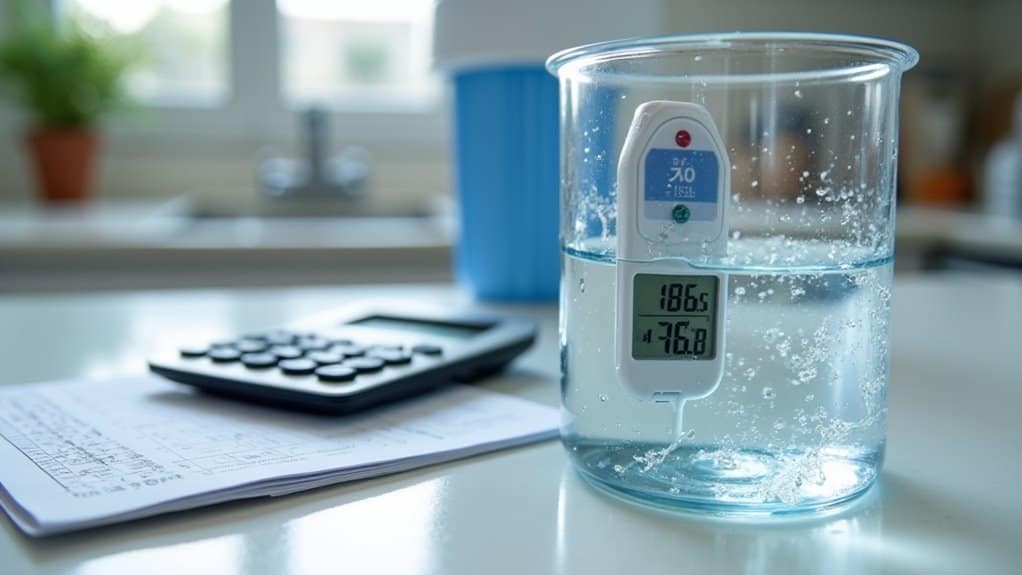Your water hardness number alone tells an incomplete story. Without calculating the Langelier Saturation Index (LSI), you can’t accurately predict scaling or corrosion potential in your plumbing system. This crucial calculation incorporates pH, temperature, calcium hardness, alkalinity, and TDS to determine if your water is balanced, scale-forming, or corrosive. We’ve found that many homeowners install incorrect softener systems based solely on ppm or gpg measurements. The true science of water treatment requires this thermodynamic framework.
Key Takeaways
- The Langelier Saturation Index (LSI) calculation provides crucial context to water hardness numbers by predicting scaling or corrosive potential.
- Water hardness numbers alone fail to account for temperature and pH effects that significantly alter mineral behavior in plumbing systems.
- Understanding mineral composition (calcium vs. magnesium ratio) is essential for proper interpretation of hardness measurements.
- LSI calculations require five parameters: pH, temperature, calcium hardness, alkalinity, and total dissolved solids.
- Without considering temporary versus permanent hardness distinctions, treatment methods may be inappropriately selected despite accurate hardness numbers.
Why Your Water Hardness Value Needs Context
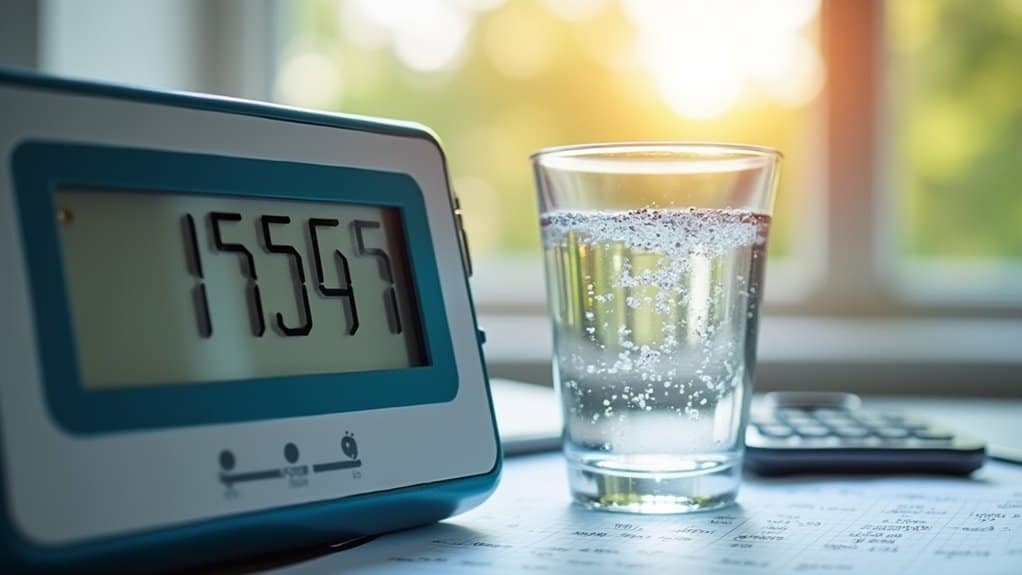
Numbers alone tell an incomplete story when measuring water hardness.
What matters is the mineral composition behind those numbers—calcium versus magnesium ratios dramatically affect how water interacts with your plumbing and body. Misjudging water hardness can lead to suboptimal softener sizing, causing inefficiencies in water treatment systems.
A hardness value of 200 ppm means different things depending on its source.
Limestone-derived hardness (calcium-dominant) creates different scaling patterns than dolomite-sourced water (magnesium-rich). Similarly, temporary hardness from carbonates can be addressed through heating, while permanent hardness requires ion exchange or reverse osmosis.
The biological impact varies too—what’s optimal for certain fish species may be detrimental to others. Understanding hardness levels helps determine the toxicity of metals that might be present in your water system.
The Langelier Saturation Index: Beyond Simple PPM Measurements
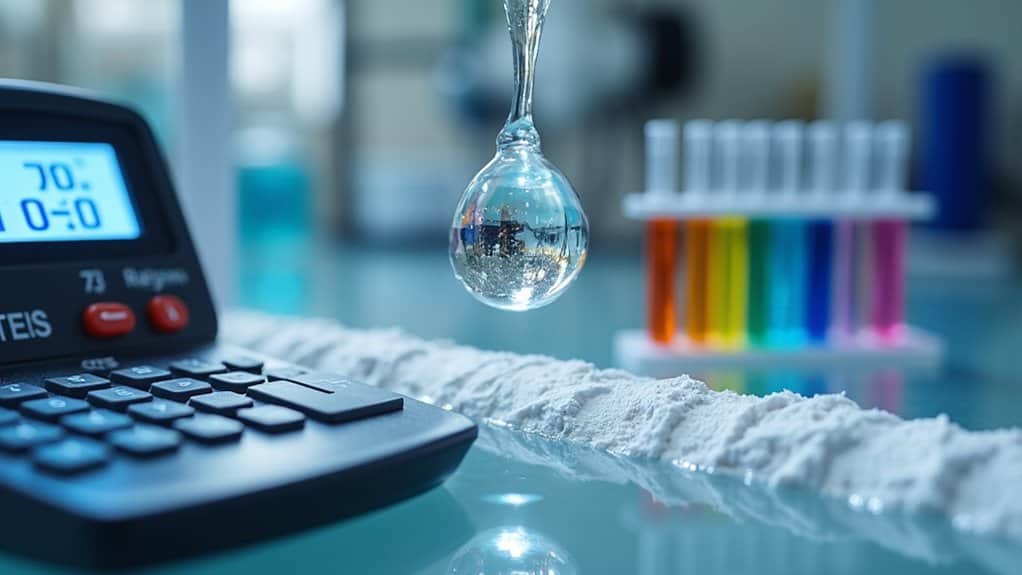
While traditional hardness measurements offer a basic understanding of mineral content, the Langelier Saturation Index (LSI) provides a sophisticated thermodynamic framework for predicting water’s interaction with calcium carbonate surfaces. This is essential because water softener sizing based solely on hardness can lead to improper system performance.
The LSI employs a formula where pH minus saturation pH (pHs) reveals your water’s true scale-forming potential:
| LSI Value | Water Behavior |
|---|---|
| Negative (< 0) | Corrosive/dissolving |
| Zero (= 0) | Balanced/neutral |
| Positive (> 0) | Scale-forming |
| -0.5 to +0.5 | Acceptable range |
| Beyond ±0.5 | Requires intervention |
We calculate LSI using five parameters—pH, temperature, calcium hardness, alkalinity, and TDS—transforming isolated measurements into actionable system insights. Understanding these parameters helps prevent extrapolating LSI to incorrectly assess water corrosivity, which remains a controversial application of the index.
How Temperature and Ph Transform Water Hardness Impact
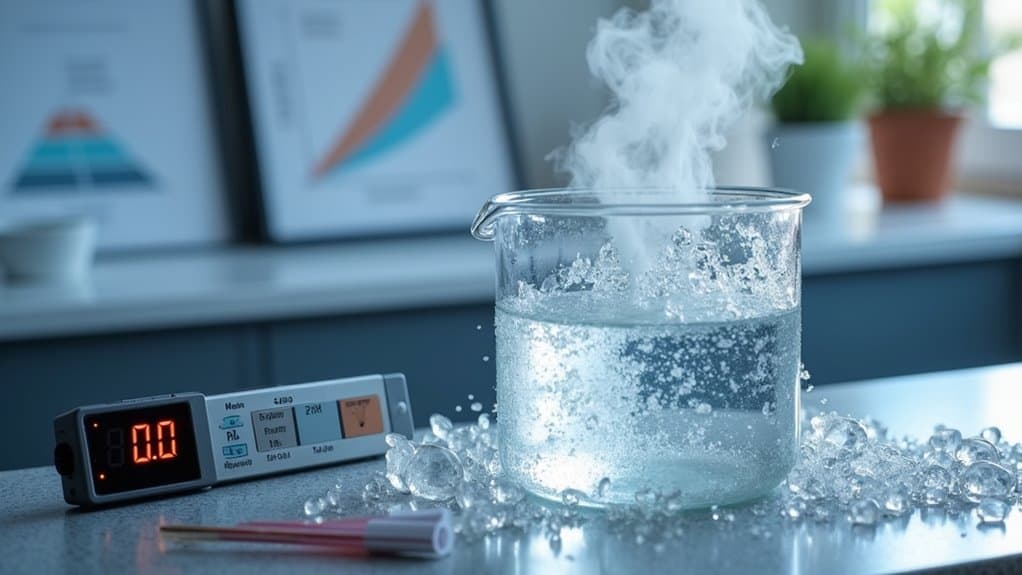
Temperature and pH represent two fundamental variables that dramatically alter water’s physical chemistry beyond simple hardness measurements.
As temperatures rise, bicarbonate ions decompose into carbonates, triggering calcium precipitation and effectively reducing dissolved hardness while ironically increasing scaling potential in heating systems.
Similarly, pH shifts control carbonate equilibrium; above 10.3, carbonate ions dominate, precipitating calcium despite high total hardness measurements.
Between 6.3-10.3, bicarbonates prevail, creating a natural buffer system that directly influences alkalinity levels, which measures a solution’s capacity to resist pH changes when acids are introduced.
These transformations occur invisibly in solution, making standard hardness values misleading without accounting for temperature and pH‘s complex interplay that determines actual mineral availability and scaling potential.
Practical Applications: Matching Hardness Values to Your Home’s Needs
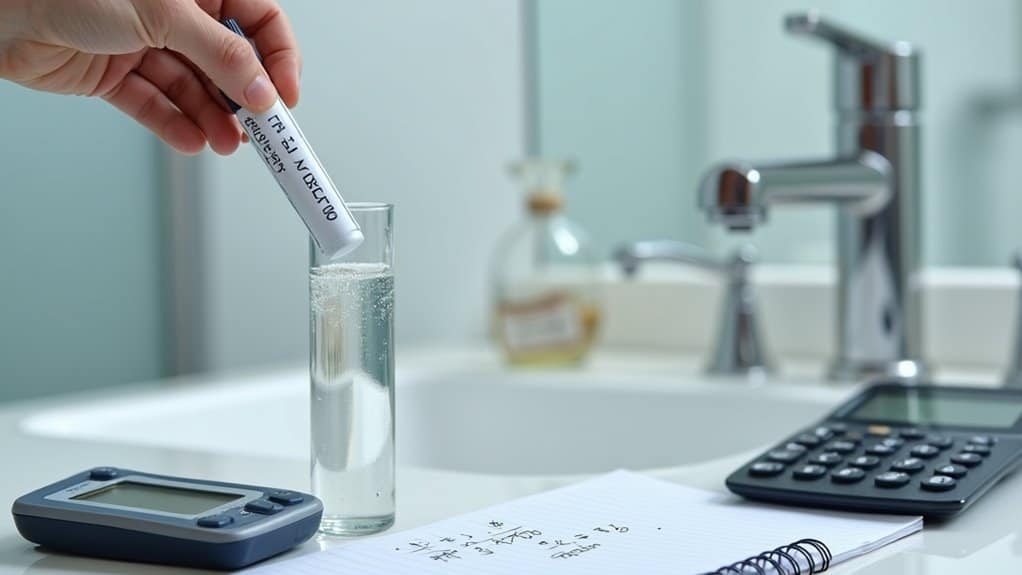
Determining the ideal water hardness for your home requires a precise understanding of measurement scales and their practical implications for both health and infrastructure. Household size can significantly affect water softener needs, as larger families typically require systems with greater capacity to manage higher water usage effectively.
We recommend targeting moderate hardness (3.5–7 GPG or 60-120 mg/L) as the optimal balance for most households. For appliance protection, consider that hardness above 7 GPG accelerates mineral scaling, reducing efficiency and longevity of water heaters and dishwashers. Utilizing features like the Dial-a-Softness Valve can help achieve your preferred hardness level with precision.
Regional variations matter significantly—well water users typically face higher hardness (7–14.5 GPG) than municipal supplies. Converting between units (1 GPG ≈ 17.1 mg/L) is essential when comparing test results to manufacturer specifications.
Frequently Asked Questions
Does Water Hardness Affect Drinking Water Taste Differently Than Cooking?
We observe that water hardness affects both drinking and cooking differently—minerals create distinct taste profiles when consumed directly, while in cooking they chemically interact with ingredients, altering textures and flavors.
Can Water Hardness Measurements Predict Pipe Corrosion Accurately?
We can’t rely solely on hardness measurements to predict pipe corrosion accurately. While high calcium/magnesium levels contribute protective scaling, precise corrosion prediction requires additional parameters like pH, alkalinity, and flow dynamics.
How Does Mineral Composition Affect Water Softener Regeneration Cycles?
We’ve found that higher calcium and magnesium concentrations accelerate resin saturation, requiring more frequent regeneration cycles. Composition affects regeneration frequency, brine efficiency, and optimal salt dosage in water softeners.
Do Specific Appliances Require Different Hardness Thresholds Than Others?
We’ve found that appliances indeed require different hardness thresholds. Dishwashers typically need water below 7 gpg, while water heaters can tolerate up to 10 gpg before efficiency significantly decreases.
Can DIY Testing Methods Detect Calcium-To-Magnesium Ratios Effectively?
Most DIY test strips can’t differentiate calcium from magnesium ions. We recommend using lab-grade titration methods or specialized digital testers if you need accurate calcium-to-magnesium ratio measurements for water analysis.
Conclusion
We’ve demonstrated why raw hardness values provide insufficient data for proper water management. The Langelier Saturation Index transforms these simplistic measurements into actionable intelligence by incorporating critical variables like temperature and pH. Without this calculation, you’re operating with incomplete information. To properly protect your plumbing systems and optimize treatment protocols, we recommend implementing LSI calculations alongside traditional hardness testing for all residential and commercial applications.

Craig “The Water Guy” Phillips is the founder of Quality Water Treatment (QWT) and creator of SoftPro Water Systems.
With over 30 years of experience, Craig has transformed the water treatment industry through his commitment to honest solutions, innovative technology, and customer education.
Known for rejecting high-pressure sales tactics in favor of a consultative approach, Craig leads a family-owned business that serves thousands of households nationwide.
Craig continues to drive innovation in water treatment while maintaining his mission of “transforming water for the betterment of humanity” through transparent pricing, comprehensive customer support, and genuine expertise.
When not developing new water treatment solutions, Craig creates educational content to help homeowners make informed decisions about their water quality.


